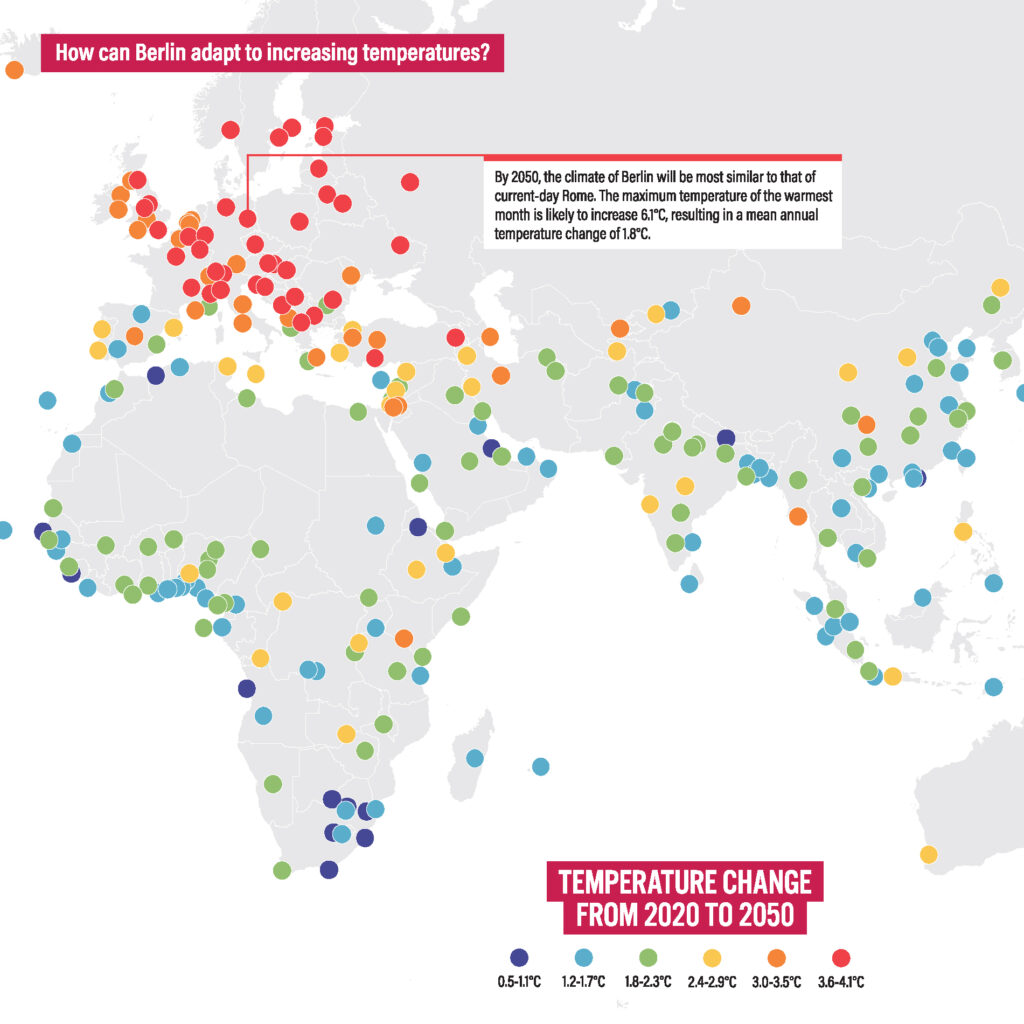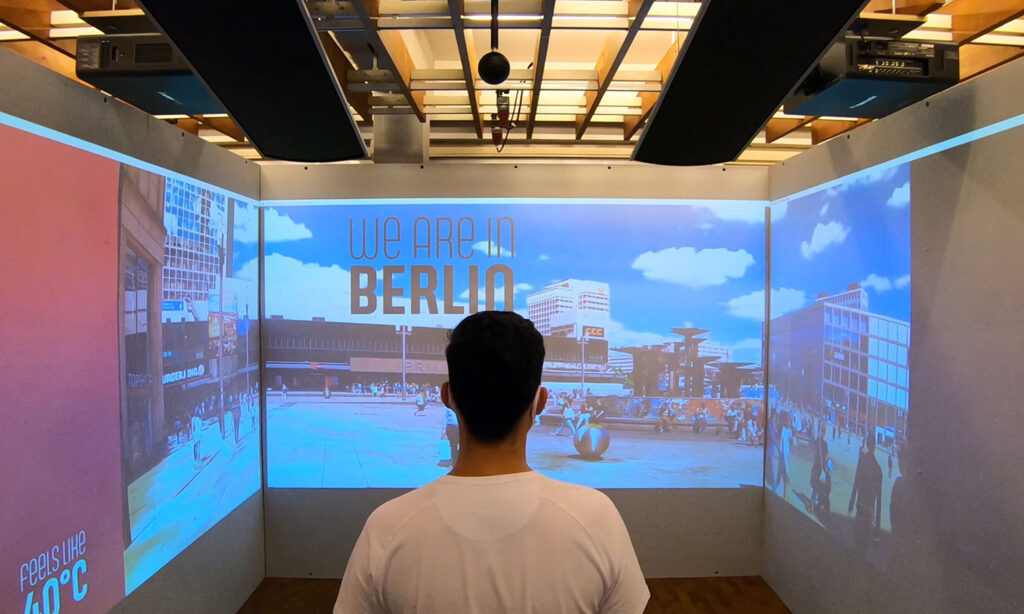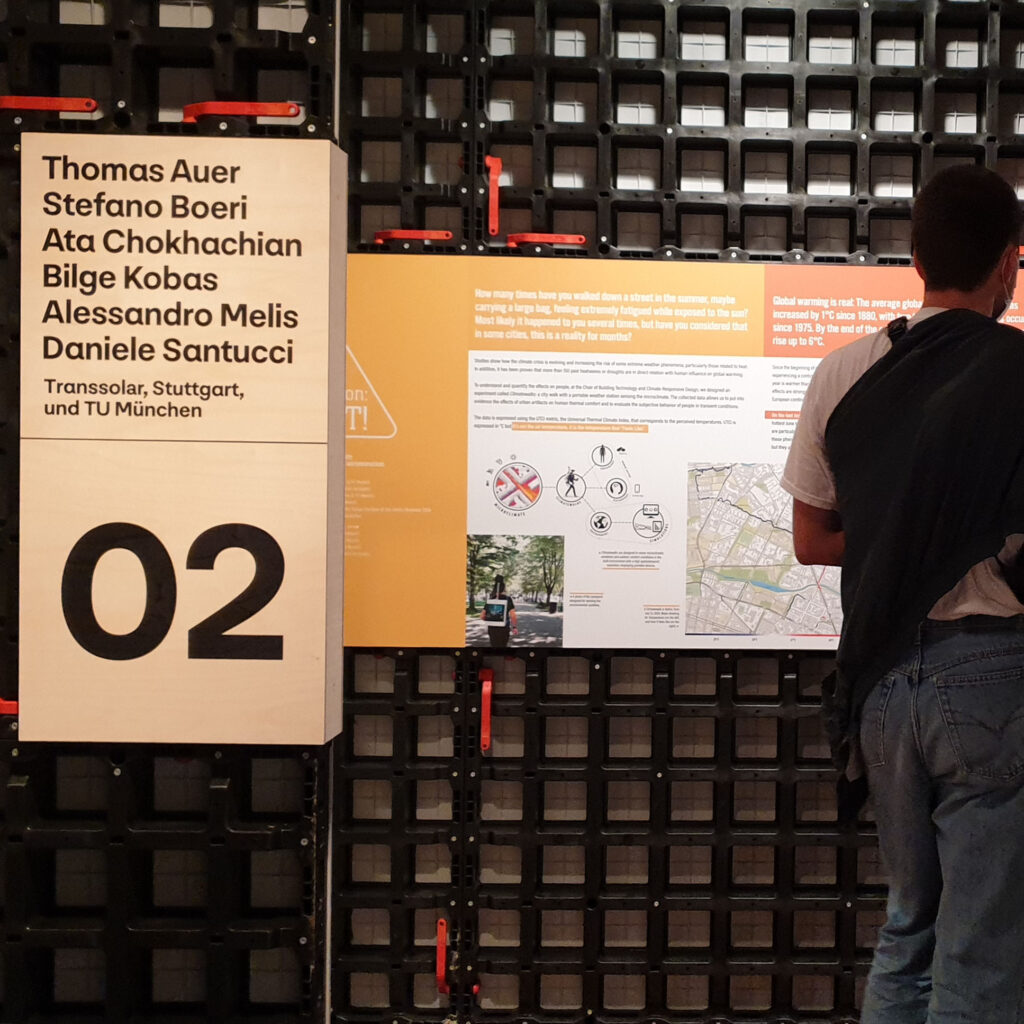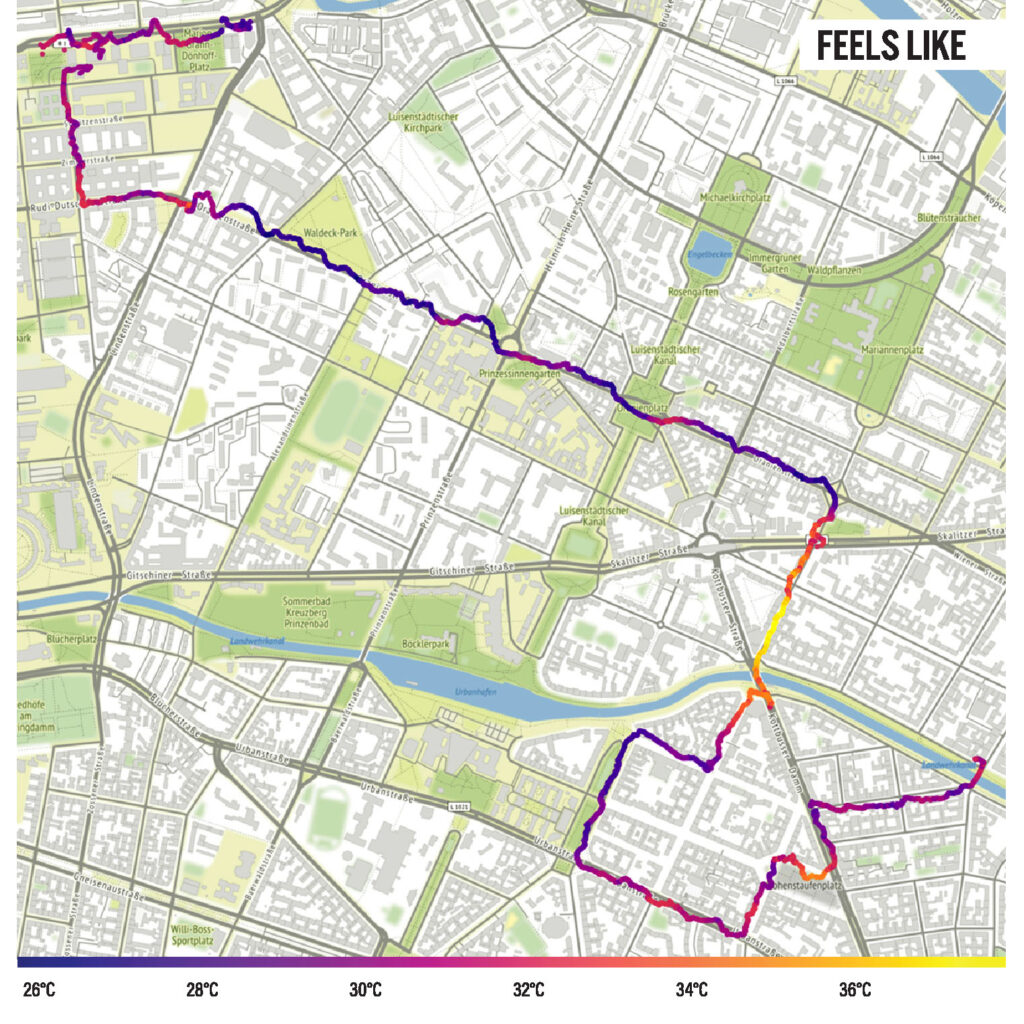Project description:
„Climate adaptation provides the opportunity to recalibrate public realm with less car- and green infrastructure instead, to generate livable and healthy cities; while also re-evaluating building density.”
Global warming requires a climatic transformation of our Central European cities. The time axis of the necessary climate adaptation goes hand in hand with the potential for a reduction of motorised individual transport. This enables a re-evaluation of the quality of building density as well as a redesign of public space as a measure for climate adaptation. The climate is a fundamental factor that enables the use of public spaces. In particular, the microclimate describes the conditions that people continuously experience with their senses. It has a strong influence on conditions in cities: places where society and economy meet and where environmental factors play a fundamental role in promoting pedestrian comfort and health and in shaping the quality of public space.
Meteorologists have predicted strong variations in climatic conditions within the next decades: by 2050 Berlin could have a Mediterranean climate, similar to Rome. Driven by climate change, the morphology and materiality of urban spaces have decisive effects on the microclimate of cities. Citizens, in particular, are exposed to the consequences of the microclimate in urban areas, which poses a high number of challenges for city dwellers and has serious implications for the daily life and well-being with different effects from place to place.

Caution: HOT! explains the relationship between urban morphology, materiality, and microclimate, based on the principles of Climatewalks – a sensing technique – and how the experiment is generating human-centered climatic knowledge of urban spaces. Hypothesizing that by 2050 Berlin’s urban climate will be similar to the one of Rome today, the installation aims to make the effects of the built environment on the microclimate comprehensive and tangible, by comparing and experiencing microclimatic conditions in Berlin and Rome. This narrative aims to raise awareness on the relation between different urban structures, and how they affect outdoor comfort and health of people. It displays the opportunity of a climate adaptation strategy in order to generate a livable and enjoyable public realm.
Team
Thomas Auer (TU München, Transsolar) / Stefano Boeri Architetti
Bilge Kobas (TU München)
Ata Chokhachian (TU München, Climateflux)
Daniele Santucci (Climateflux)
Alessandro Melis (University of Portsmouth and Curator of the ital. Pavilon at the Venice Biennale 2020)



